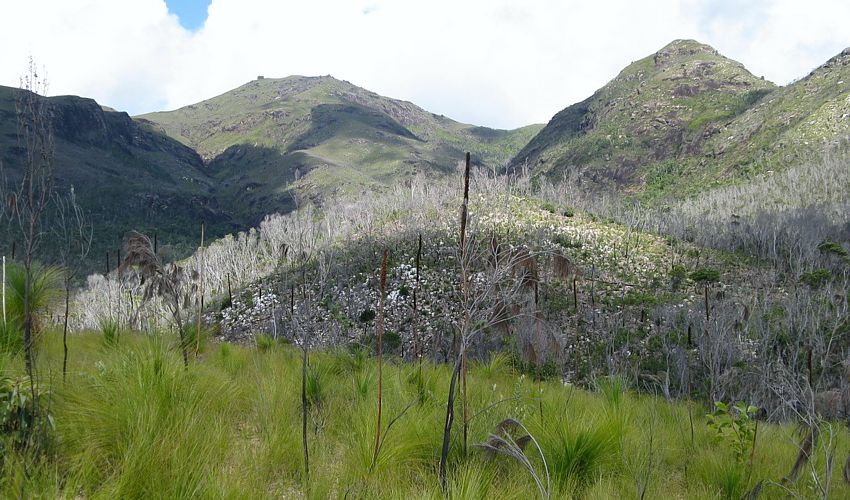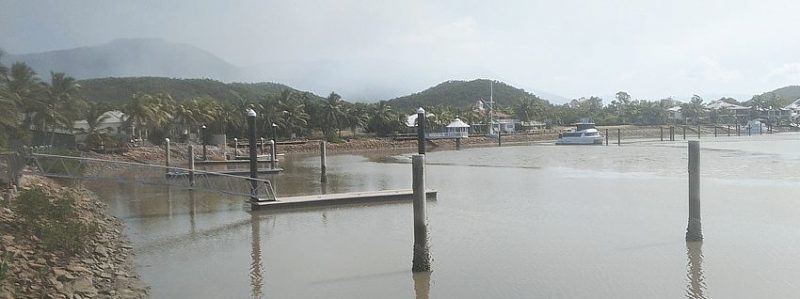
NATIONAL PARKS QUEENSLAND continue to ignore their charter: To manage our forests using “Minimum human interference”; protect from all interference other than essential management practices so that natural attributes are preserved and parks are actively managed to conserve wildlife.
National Parks are now ‘landscaping’ wilderness to their preferred designs and the tool they use to achieve their aims is fire. They are managing our forest by continually burning them despite the obvious cruelty to wildlife and the extremely dangerous airborne pollution threat.
Hinchinbrook Island, off the east coast north of Townsville, is Australia’s largest Island National Park and World-heritage listed. Home to the rare and endangered Blue Banksia, (falsely claimed by QPWS to require fire to germinate) the Island has over the past few years been subjected to repeated major destructive interference by National Parks.


National Parks senior management have kept silent about a series of hot burns largely from incendiaries dropped from helicopters which we believe began in September 2014 on Hinchinbrook Island and continued into 2019 when nearby Gould Island was also included.
It is extraordinary, but Hinchinbrook Island together with all the other tropical islands off the north Queensland coast (with the exception of Dunk Island) have been deliberately burnt for many years.
The Hinchinbrook fires, planned and ignited by National Parks in September of 2014 destroyed about eighteen square kilometres of forest on the steep slopes of the Island right in the centre of the most attractive part of the Thorsborne Trail. Subsequent fires have enveloped even more of the Island and destroyed more Blue Banksia.
While the wet tropical vegetation on Hinchinbrook needs no fires to survive, the eucalypt forest favoured by National Parks “needs” cruel maintenance burns every five or so years. These burns kill rainforest species which National Parks describe as “Invasive rain forest”. Natural vegetation has been replaced by an intensely thickened Wattle dominated forest in the burn areas.
The subsequent airborne pollution kills native wildlife and the people who have the misfortune to live in the path of these huge and deadly smoke plumes. The majority of native animals unable to fly endure extreme cruelty.
Months after the 2014 Hinchinbrook fire, we were contacted by an expert witness who reported that a very hot fire had caused catastrophic irreparable damage to the forests of magnificent Hinchinbrook Island.
At that stage we did not know the cause of this fire. Investigations rapidly uncovered that this was yet another hazard reduction burn that went out of control and will take many, many years to repair. It was many months before we were able to get to the island to investigate, the damage was horrific with virtually every living thing killed.

Last year (2019) Gould Island — just to the north of Hinchinbrook Island — was also burnt at the worst possible time, creating a hot-burn right in the middle of the nesting season for the Pied Imperial Pigeon. Large numbers of chicks together with most other native animals would have been incinerated.
The protection of rare species such as the Blue Banksia should be of paramount importance. The burn area contained significant numbers of saplings and many mature trees in the process of recovery from cyclone Yasi in 2011, the vast majority of this species were destroyed.
On our first visit, we searched for living specimens but could only find two tiny seedlings. The damage to both fauna and flora has resulted in substantial alterations to the natural biodiversity of these islands. National Parks destruction of rain forest species which do not burn readily, has resulted in dry eucalypt forests that are substantially more flammable than the forest it replaces.
In 2019, more fires were lit in extremely dry conditions at the beginning of November. These burnt fiercely for over four weeks causing extreme levels of life-threatening airborne pollution affecting the health and well-being of people in Port Douglas, Cairns, Innisfail and Mission Beach in the north to Ingham in the South. For the duration of this fire Hinchinbrook Island could not be seen from the adjacent mainland such was the level of dangerous airborne pollution.
Subsequent heavy tropical rainfall will have caused serious erosion of the now unprotected thin layer of topsoil on the very steep slopes at the top of some of the mountains. Twenty years ago, it would be unheard of to ignite major fires in the beginning of the wet [season] pointing the finger at inexperienced staff making decisions they were not capable of making.
National Parks have kept quiet about this and despite the carnage the people responsible still work for National Parks and plan further burns for this magnificent and very important World Heritage Area. As far as we know and despite the serious nature of the damage, no prosecutions are planned by the minister, Wet Tropics Management Authority or QPWS.
An informal Cardwell-based group was formed to combat the destruction of our wet tropics forests and wildlife by continual burning and to make the public aware of the extreme dangers of breathing heavily polluted air. Air quality in the wet tropical regions is dangerously compromised by months of heavy smoke from National Parks ignited forest fires.
Despite the fact that airborne pollution is responsible for over 3,000 premature deaths in Australia every year (over double the road toll), the local town of Cardwell is blanketed in thick smog usually for several weeks at a time. This pollution is apparently necessary for National Parks landscaping.

They started burning Cardwell a few days ago and really got stuck in. Mountains behind Cardwell, (the Cardwell Range) is almost invisible and they have just started. (Photographed end April 2020.)
Historical research post-European settlement indicates that there is a huge, almost vertical, spike of burning beginning about two hundred years ago that is still rising. This peak suggests a huge rise in deliberately-lit fires, as far as can be ascertained far higher than any other event, in the 70,000-year period of human habitation of the continent.
[Learning from traditional Aboriginal patch-burning with cool fires is a far cry from dropping incendiary devices for hot burns across the countryside, particularly in an era of climate changed-induced drought and bushfires, Editor.]
We questioned the QPWS officers responsible for fires in this area about the pollution they create and this was their answer:
They also replied to questions about how many plants required fire to germinate, the answer was 26.
The current research shows there are no plants in the Mediterranean climate areas of Australia, that is the areas containing the fire belts of Australia, that need fire to germinate. Australia has about 30,000 plant species the vast majority of which are either severely damaged or killed by fire.
I believe the World Heritage listing for Hinchinbrook Island should be suspended until a full and independent investigation has taken place to determine the competency of National Parks to manage World Heritage sites such as Hinchinbrook and Gould Island, and that they should be required to show good cause for their deliberate failure to comply with their own directives and management protocols to responsibly manage world heritage areas.
The extensive research into hazard reduction burning shows clearly this practice does not work.
Extensive US research into the extreme dangers of inhalation of Pm 2.5 was completed in about February of 2020. See above link to ABC Radio National Health report.
The deliberate production of this substance and its distribution throughout Australia should be banned immediately without exception.